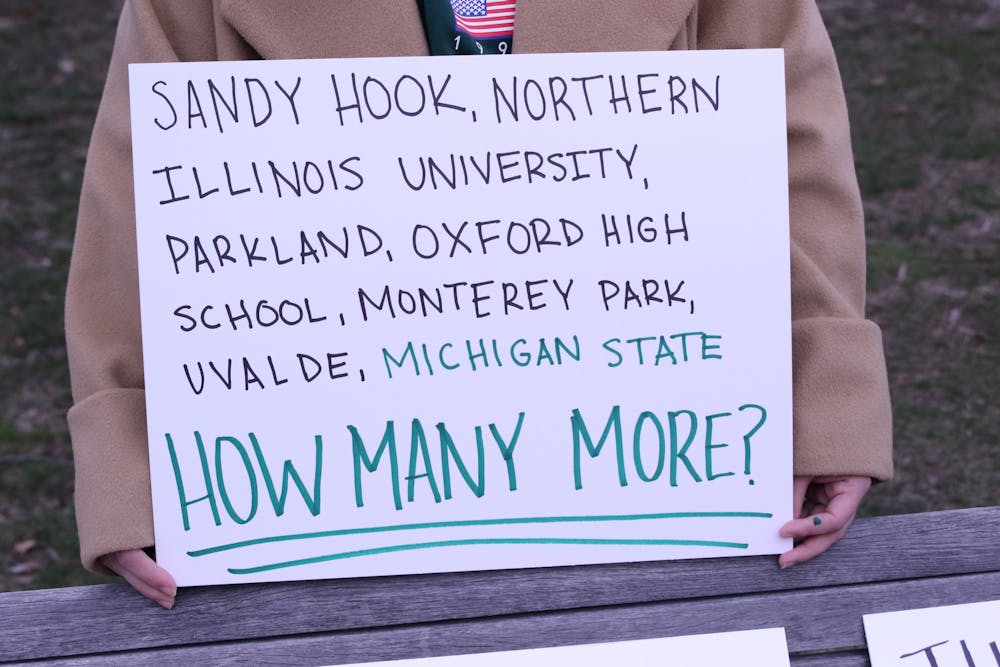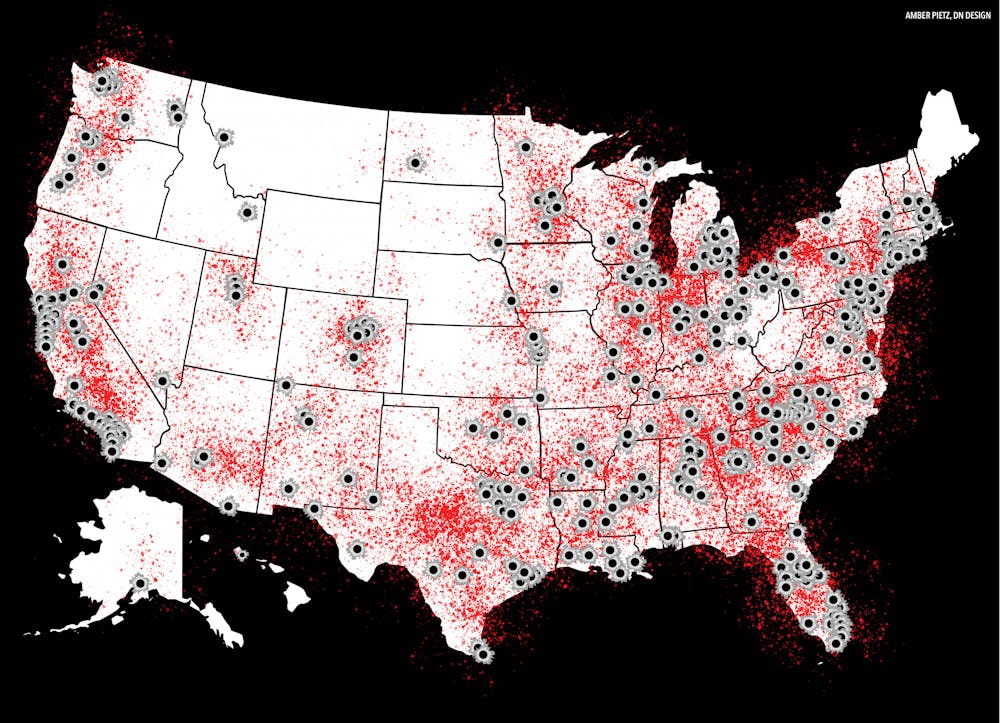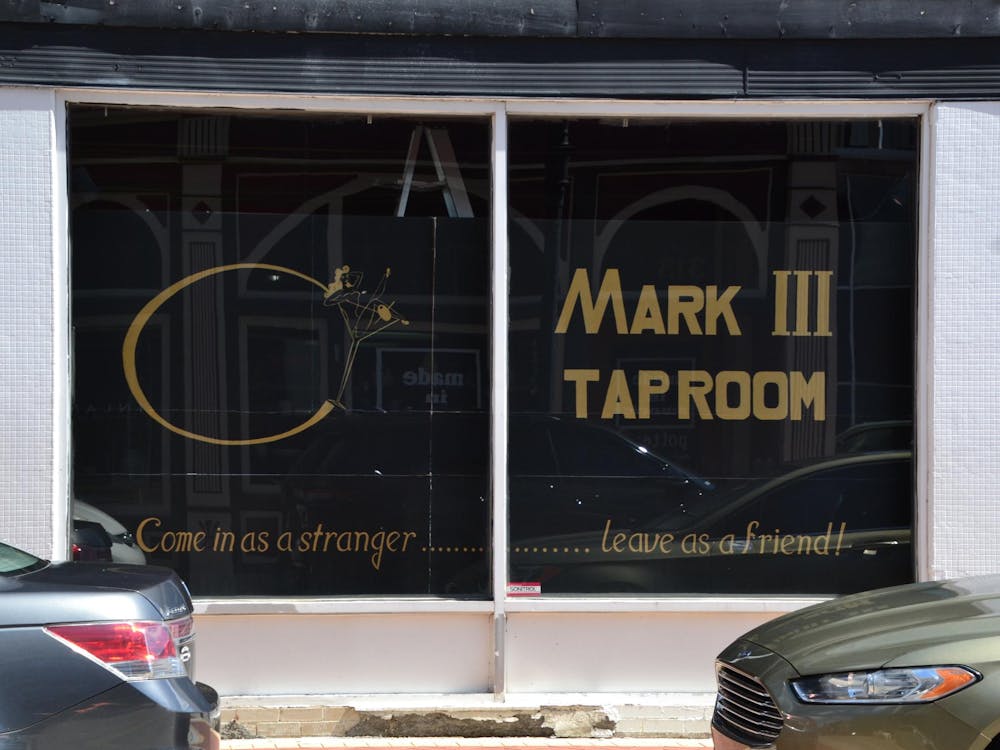Monday.
Hannah Allen was getting back into the flow of classes after traveling to a mock trial competition. She just returned from Michigan State University (MSU).
After finishing her homework, Allen began to check her email when she saw the news. She received a newsletter from the New York Times, and that’s how she found out about the active shooter at MSU.
“I was like, ‘That can't be right.’ I was just there,” Allen said.
She immediately reached out to her mock trial team and went into her sister’s room crying.
“It was horrifying to think about that I was just there, and everything that they must be going through, the anxiety of not knowing what's going to happen [and] the pain,” Allen said.
While in the comfort of her sister's room, with her thoughts racing, Allen made the decision overnight to plan a silent protest.
“For so long I've been sending thoughts and prayers when everything happened at Uvalde and sending thoughts and prayers for Monterey Park and everything else,” she said. “I just felt like I needed to do something.”
The third-year English, psychology and pre-law student made the decision to honor Arielle Diamond Anderson, Brian Fraser and Alexandria Verner — the three students killed in the active shooter incident on MSU’s campus Feb. 13 — by standing out in Ball State University’s University Green for three hours the next day.
Allen stood outside wearing MSU’s colors — green and white — from 11 a.m. to 2 p.m. People walked past her expressing support and giving her encouragement.
As the MSU shooting was just one of many across the United States in the recently, Allen found herself thinking about the possibility of it happening at Ball State.
“No one really expects it to happen to us either, but we need to be prepared if it does,” she said.

Ball State University Police Department (UPD) Chief Jim Duckham said one factor that makes university shootings different to handle is size.
“Our geography, for instance,you have 100 plus buildings on campus,” Duckham said. “Whereas, in some of your other shootings, [it] may [be] contained to a particular location.”
When it comes to patrolling Ball State’s campus, UPD approaches it like a small city.
Another difficulty UPD faces is each incident has to be analyzed independently, Duckham said. Each incident will have a different response depending on what’s known and not known.
To help the Ball State community be prepared in the event that a shooting happens on campus, UPD has presented training videos during Welcome Week, except during 2020, 2021 and 2022 due to Covid-19, as well as offering videos on the Emergency Preparedness and Response Guidelines page on Ball State’s website.
On top of the videos, UPD does Civilian Response to Active Shooter Events (CRASE) training to help students and faculty learn simple, transferable skills for any dangerous situation. In this training, avoiding, denying entry and defending yourself (ADD) is emphasized.
ADD was chosen over other training, such as alert, lockdown, inform, counter and evacuate (ALICE) and run, hide and fight, due to how accessible the acronym can be interpreted.
“If you’re mobility impaired, and I'm telling you the first thing you have to do is run, and that's not something you can do, does that disempower you?” Duckham said. “So, I think I can teach anybody how to avoid a situation, and [avoid] means more to different people.”
Duckham advises students to be situationally aware, no matter the situation and to be aware of exits and know skills like first aid. He said people are “creatures of habit,” and breaking those habits, like taking a different way out of a building, can help with situational awareness.
Along with the training, which will help people if an incident were to occur before police arrive, Ball State has alert systems that send text messages or Rave alerts.To sign up for Ball State’s emergency alerts, go to the emergency alerts page on Ball State’s website.
In the event a shooting occurred on Ball State's Campus, UPD would work with the Muncie Police Department, Muncie Emergency Medical Services and the Muncie Fire Department, if the situation called for it, Duckham said.
He said UPD could potentially be a part of the response if an active shooter event occurred in Muncie Community Schools.

UPD works with Ball State’s administration on using education as a preventative tool with active shooter trainings and workshops.
“Nobody wants to think, ‘I'm going to come to college and learn about what to do if there is an active shooter,’ but we think it's important to do it,” Ro-Anne Royer Engle, vice president of student affairs, said.
Information is especially important in an active shooter situation in order for students, faculty and staff to respond safely in a time of crisis, Royer Engle said.
She highlighted UPD’s CRASE training with ADD and run, hide and fight as “critical” basics students want at “the top of [their] mind.”
Royer Engle said students should be aware of preventative services available to report concerning behaviors seen on campus.
“There is information we receive through the students of concern reporting, where anybody can report concerning behavior that a student may be displaying at any one point,” Royer Engle said.
The team, called Behavioral Intervention Team (BIT), includes staff from multiple areas to assess the behaviors of the student from each prospective area included on the team.
In addition to educating students and faculty, Royer Engle stressed the importance of taking public emergency notifications seriously in order to keep people safe and allow the appropriate people to respond effectively in an emergency.
It is through these measures, Royer Engle said, the community can be safer.
“We know we have trained people to respond, [people] have access to information on our website, [we] have a law enforcement agency and first responders trained to respond to this,” Royer Engle said. “ [We] have the staff in place to respond if or when these things happen, and [we] have a BIT team and multiple ways to be able to [collect] information about concerning behavior [in students] ... those are the things we can reasonably do to be able to help keep the community safe.”
Ball State President Geoffrey Mearns also spoke on the importance of preventative measures being in place before an incident occurs. One he mentioned is the BIT team; however, he said the team is limited as they can only identify problems arising in their jurisdiction.
“The unfortunate thing about the shooting at [MSU] was that [the] shooter had no relationship with campus ... those are the ones that are the most challenging because there's no way to predict that that person would come to your campus,” Mearns said. “That's why having these other mechanisms in place to try to identify a person who's exhibiting behavior might give you some sense that there's a risk emerging ... so that if it does materialize, you're prepared.”

University Police Department officers are an on-campus source for help. An officer is assigned to each residence hall to encourage a positive relationship with the department. Kaiti Sullivan, DN File
If an incident such as a mass shooting were to occur, there are many factors to be taken into consideration in the aftermath. The Ball State Counseling Center has an important role to play with managing mental health in the wake of such an event.
“I think the goal for responding after some kind of traumatic event is to help students learn to manage the emotions and the memories that are tied to that,” Bill Betts, director of counseling and health services at Ball State, said. “So that they don't keep them from sort of functioning and help them kind of understand and put in context the event, so they can move forward.”
However, as Betts went on to explain, different situations can change how the department would respond. He also said university administration and police have systems in place to prepare for such events.
“I do think the university is well prepared to respond to things,” Betts said. “I think [UPD] is one of the best police forces I've ever worked with. I think administration at the university has a lot of plans and mechanisms in place to really support the needs of campus and would be ready should something happen.”
The importance of getting the right information about events such as school shootings is important, Betts said. He highlighted the importance of “reputable sources” and “accurately assess[ing] your risks.” He advised students to not scroll through social media posts relating to school shootings.
There have been 13 K-12 school shootings with injury or death in 2023, according to EducationWeek, with the most recent being March 27 in Nashville, Tennessee.
Allen stated the importance of “remembering the victim’s name over the person that committed the tragedy.”
Police identified the victims as Evelyn Dieckhaus, 9, Hallie Scruggs, 9, William Kinney, 9, Cynthia Peak, 61, Katherine Koonce, 60, and Mike Hill, 61.
Contact Hannah Amos with comments at hannah.amos@bsu.edu or on Twitter @Hannah_Amos_394 and contact Abigail Denault with comments via email at abigail.denault@bsu.edu.





